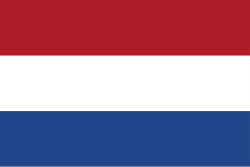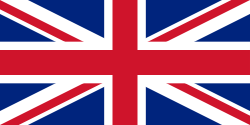General Information
Population
Immigration
Emigration
Working-age population
Unemployment rate
GDP
Refugees, Asylum seekers, IDPs
Citizenship
Territory
Migration Authorities
Responsible Body
Line Ministries
Department of Enterprise, Trade and Employment
Department of Children, Equality, Integration, Disability and Youth
Agencies
Key Policy Documents
International Protection Act 2015
Employment Permits (Amendment) Act 2014
S.I. No. 548/2015 - European Communities (Free Movement of Persons) Regulations 2015.
S.I. No. 548/2015 - European Communities (Free Movement of Persons) Regulations 2015.
Irish Nationality and Citizenship Act, 1956
Criminal Law (Human Trafficking) Act 2008
Criminal Law (Sexual Offences) Act 2017
European Union (Withdrawal Agreement) (Citizens Rights) Regulations 2020
Description
Ireland is a country of origin, transit and destination for international migrants. Its population continues to grow, in part due to sustained migration inflows. As of April 2024, the country’s population reached nearly 5,380,000, with 81% holding Irish nationality. The net migration balance for the same year stood at 79,300, marking the largest population gain since 2008, when the population increased by 109,200. Combined with natural population growth, this increase in net migration has contributed to a 1% rise in population change, climbing to 98,700 in 2024.
According to UN DESA, 2024 international migrant stock in Ireland was 1,216,237, representing approximately 23.4% of the total population – one of the highest shares among the EU Member States. According to the Central Statistics Office (CSO), from May 2023 through April 2024, almost 150,000 people immigrated to Ireland – the highest number in 16 years – of whom about 87,000 were citizens of non-EU countries, 27,000 were nationals of other EU Member States, mostly Poles and Romanians, 30,000 were returning Irish, followed by 5,400 UK nationals, and smaller numbers of Indians and Ukrainians. Over the past four years, the number of first residence permits issued to non-EU nationals steadily increased from 30,382 in 2020 to 79,985 in 2024, with the peak of 88,595 permits in 2023. Most 2024 permits were granted for education (38,416), employment (19,078), and other reasons (18,297).
In 2023, Ireland hosted 25,082 international students at the bachelor’s and master’s levels, with the largest groups coming from India (15.4%), followed by China (12.8%) and the US (9.7%). Most international students in Ireland are enrolled in fields such as health, business administration and law, arts and humanities, reflecting Ireland’s strong higher-education offer in technology, innovation and medical training.
Over the past decade, the number of non-Irish citizens employed in the Irish economy has risen significantly. Of the 2.7 million people currently working in Ireland, around half a million are non-Irish nationals. This diverse workforce has played a key role in Ireland’s recovery from the global financial crisis and in driving the country’s economic growth and productivity in recent years. In 2023, the average employment rate among migrants reached 77.1%. The Employment Permits Bill 2022, passed in June 2024, introduced several key labour migration reforms. Spouses and partners of General Employment and Intra-Corporate Transferee permit holders already residing in Ireland may now work without a separate work permit, while those abroad must still apply for family reunification after 12 months. Family reunification waiting times are subject of an ongoing review of the Non-EEA Family Reunification Policy. The Bill also introduced a Seasonal Employment Permit for short-term or recurring jobs in sectors reliant on seasonal labour. Persistent labour shortages remain in ICT, healthcare, engineering, business and construction.
Between 2021 and 2024, the number of asylum applications in Ireland rose more than sevenfold, from 2,615 to 18,435. This surge mirrors broader European trends of increased mixed migration flows and secondary movements triggered by recent global crises. Afghans submitted the largest number of asylum applications in both 2023 (1,105) and 2024 (1,000). In 2024, Palestinians lodged 970 applications – the highest number since 2011 – making them the second-largest group after Afghans, and followed by Syrians. Together, applicants from Afghanistan, Palestine and Syria accounted for over 13.3% of all asylum requests in 2024. These figures reflect the growing number of applicants from conflict-affected areas.
Since the onset of Russia’s invasion of Ukraine in 2022, over 113,000 people from Ukraine have arrived in Ireland, with around 80,000 still residing in the country as of June 2025. Beneficiaries are issued temporary residence permits valid for one year and renewable annually, granting immediate access to the labour market, healthcare, education, housing support, and social welfare services.
Ireland has one of the most globally dispersed diasporas relative to its population, with up to 70 million people worldwide claiming Irish ancestry – particularly in the UK, the US, Canada, Australia, and New Zealand. According to UN DESA, the stock of Irish living abroad in 2024 stood at 714,405. The main countries of residence included the UK (360,446), the US (125,844) Australia (90,203), Poland (28,912), and Canada (28,277). From May 2023 through April 2024, about 69,000 people left Ireland – the highest number since 2015 – including almost 35,000 Irish nationals. Recognising the strategic value of its diaspora, Ireland actively engages its global community as a source of investment, innovation, and diplomacy. Ireland’s Diaspora Strategy (Global Ireland) 2020-2025 is based on the following key pillars: promote Ireland’s core values (such as openness, diversity, and human rights); build mutually beneficial economic relationships between Ireland and its diaspora; support the promotion, preservation and evolution of Irish culture, heritage and extend Ireland’s global reach and soft power by engaging with the diaspora as ambassadors of Ireland.
Ireland is both a destination and, to a lesser extent, a transit country for human trafficking and migrant smuggling. While the overall number of identified victims remains relatively low, persistent challenges in detection, prosecution, and victim support continue to draw national and international concern. According to the U.S. State Department TIP Report 2024, Ireland does not fully meet the minimum standards for the elimination of trafficking but is making significant efforts to do so. The government demonstrated overall increasing efforts compared with the previous reporting period, therefore Ireland remained on Tier 2. According to the Irish Human Rights and Equality Commission (IHREC), which serves as the national rapporteur on trafficking, 53 victims of human trafficking were identified in 2023, representing a 14% increase from the previous year. Between 2013 and 2023, a total of 566 victims were formally identified in Ireland, including 44 children. Most victims were women and girls subjected to sexual exploitation, though cases of labour exploitation notably in the fishing, agriculture, hospitality, domestic work, and meat-processing sectors have become increasingly prevalent. The GRETA Third Evaluation Report on Ireland noted growing evidence of forced labour and coercion in these industries, highlighting structural vulnerabilities linked to temporary or irregular work status.
Irregular migration to Ireland remains modest but has seen relative growth. According to Eurostat, 3,265 non-EU nationals were found illegally present in Ireland in 2024, twice the 2023 number and the largest number since 2014. The main nationalities included Georgians (795), Pakistanis (385) and Brazilians (285), followed by smaller numbers from Algeria, India, and Nigeria. Many of those found to be illegally present are believed to have entered legally and overstayed visas, a trend consistently noted in research by the Migrant Rights Centre Ireland (MRCI) and the ESRI. Out of 3,275 non-EU nationals ordered to leave in 2024 (207.6% more than in 2023), 1,055 people were actually returned following an order to leave (up from 285 in 2023). Enforcement patterns in Ireland differ from those in continental Europe, as the country is not part of the Schengen Area and operates border controls primarily through its airports and ports rather than land borders.
Migration governance in Ireland is grounded in a national legal framework complemented by EU and international obligations, while administrative implementation is largely the responsibility of the Department of Justice through the Immigration Service Delivery (ISD). Migration in Ireland is governed by a series of primary and secondary laws, which regulate immigration, international protection, residence, employment, and citizenship. Key legal instruments include: Immigration Act 1999 as amended in 2023 and 2024. The White Paper on Ending Direct Provision (2021) outlines Ireland’s transition toward a not-for-profit reception model for asylum seekers, ensuring dignified accommodation, access to healthcare, education, and community integration. Complementing this, the Migrant Integration Strategy 2017–2021 (extended) promotes equality and inclusion across all sectors, while a forthcoming strategy will align with the National Action Plan Against Racism 2023–2027 to further strengthen social cohesion and anti-discrimination efforts. In the context of the EU Pact on Migration and Asylum coming into effect in June 2026, Ireland has initiated a series of legislative and administrative reforms aimed at streamlining asylum procedures, enhancing coordination among relevant agencies, and reinforcing reception and return capacities in line with evolving EU standards.
Ireland actively participates in several regional and global migration dialogues, including the Prague Process, the Budapest Process, the Rabat Process, and the Khartoum Process, as well as the Global Forum on Migration and Development. Ireland is also a signatory to the United Nations Global Compact for Safe, Orderly and Regular Migration, reflecting its commitment to international cooperation on migration governance and the protection of migrants’ rights.
Relevant Publications












